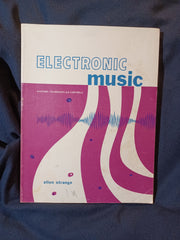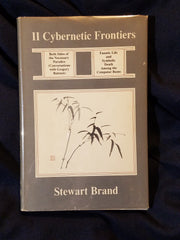Engineering Cybernetics by H. S. Tsien
Engineering Cybernetics by H. S. Tsien. McGraw-Hill. 1954. First printing with '1954' on title page and copyright page and no indication of later printing. Hardcover with no dust jacket. Bright silver lettering on the spine. Cover edge wear, mostly on the top and bottom of the spine and cover tips, but not worn through the cloth. Light wear on the front cover. Previous owner name in ink on the first blank page. Also erasure marks on the corner of the page and an incidental pen? streak on the same page. Another light incidental streak of some sort on the paper inside the front cover. I find no other previous owner markings. No tears, folds or creases to pages. Binding is tight with no looseness to pages. Not ex-library, not remaindered and not a facsimile reprint. For sale by Jon Wobber, bookseller since 1978. HF25a
"Qian Xuesen, or Hsue-Shen Tsien (Chinese: 钱学森; 11 December 1911 – 31 October 2009), was a Chinese mathematician, cyberneticist, aerospace engineer, and physicist who made significant contributions to the field of aerodynamics and established engineering cybernetics. Recruited from MIT, he joined Theodore von Kármán's group at Caltech.[1]
During the Second Red Scare, in the 1950s, the US federal government and the Ku Klux Klan accused him of communist sympathies. In 1950, despite protests by his colleagues, he was stripped of his security clearance.[2] He decided to return to mainland China, but he was detained at Terminal Island, near Los Angeles.[3] After spending five years under house arrest,[4] he was released in 1955 in exchange for the repatriation of American pilots who had been captured during the Korean War. He left the United States in September 1955 on the American President Lines passenger liner SS President Cleveland, arriving in China via Hong Kong.[5]
Upon his return, he helped lead the development of the Dongfeng ballistic missile and the Chinese space program. For his contributions, he became known as the "Father of Chinese Rocketry", nicknamed the "King of Rocketry".[6][7] He is recognized as one of the founding fathers of Two Bombs, One Satellite." - wikipedia












